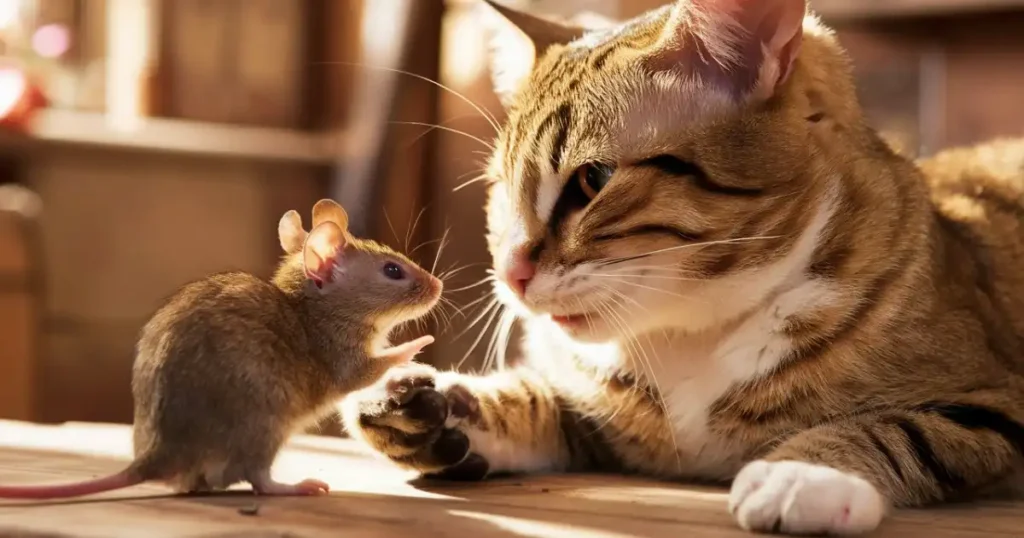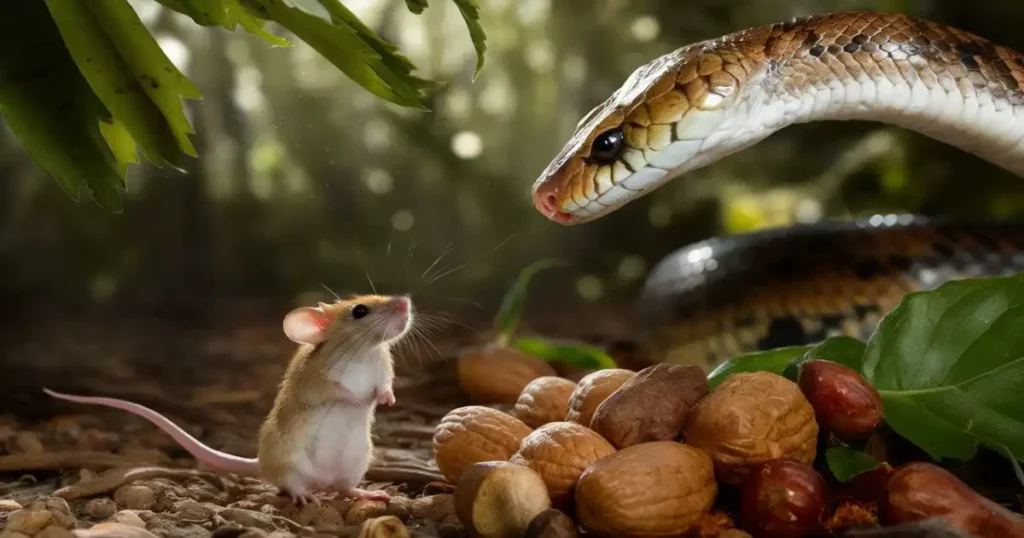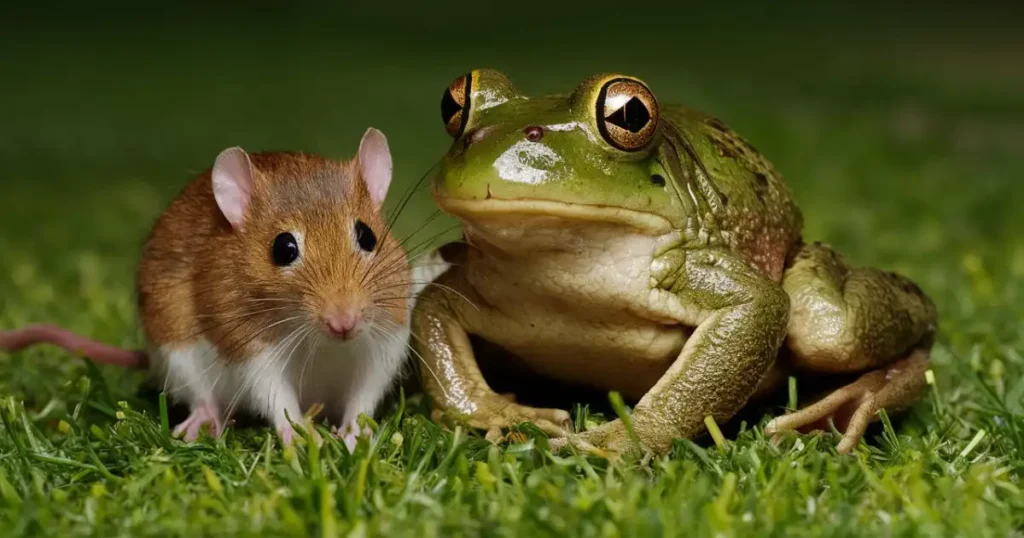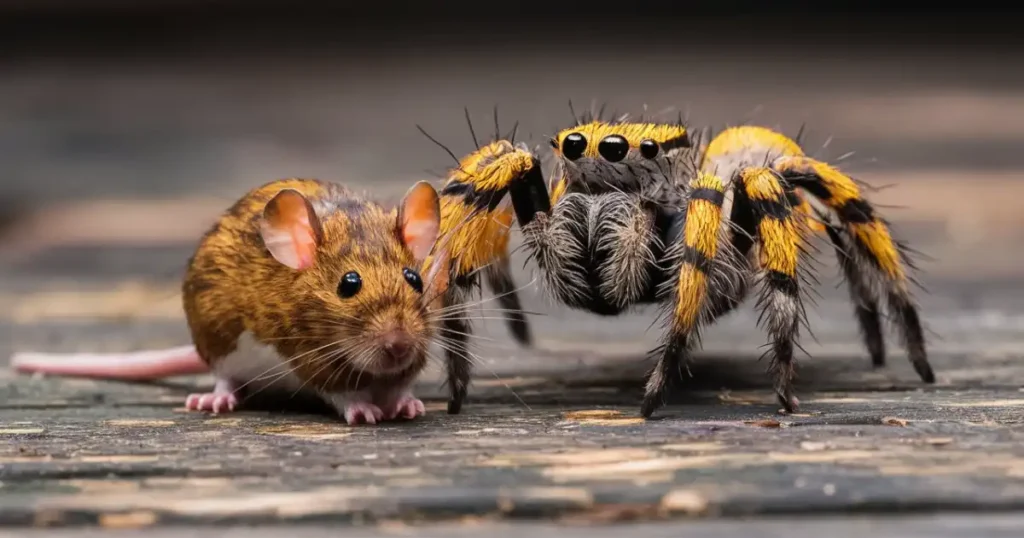
Mice are a common prey species in many ecosystems, serving as a vital food source for a variety of predators. Understanding which animals eat mice can offer insights into the natural balance of ecosystems and the food chain. In this comprehensive article, we will explore the various predators that rely on mice as a significant part of their diet and discuss the importance of mouse control.
The role of mice in the food chain cannot be understated, as they provide essential nutrients for a multitude of species, from birds of prey to reptiles and even invertebrates. This intricate web of predator-prey relationships ensures the stability and health of ecosystems, promoting biodiversity and ecological resilience.
Additionally, by studying the predators of mice, researchers can better understand population dynamics and the impacts of environmental changes on various species. Mice living in homes also show how important it is to have humane and effective ways to get rid of pests, like the ones Critter Stop offers, to protect people's health and property while keeping the ecosystem in balance.

Birds of prey, or raptors, are among the most formidable hunters of mice. Their keen eyesight, sharp talons, and powerful beaks make them adept at capturing these small rodents.
Owls are nocturnal predators that rely heavily on mice for sustenance. Species such as the Barn Owl, Great Horned Owl, and Screech Owl are particularly noted for their mouse-hunting prowess. Owls have excellent night vision and silent flight, which allow them to hunt mice effectively in the dark.
Hawks, such as the red-tailed hawk and Cooper's hawk, are diurnal hunters. They use their sharp vision to spot mice from high in the sky or from a perched position before swooping down to capture them with their talons.
While eagles primarily hunt larger prey, they will also consume mice when other food sources are scarce. The Bald Eagle and Golden Eagle are known to include mice in their diet, particularly when feeding their young.

Many mammalian predators rely on mice as a key part of their diet. These predators vary widely in size and hunting strategies.
Both domestic and wild cats are proficient hunters of mice. Domestic cats often hunt mice for sport, while wild cats, such as bobcats and mountain lions, rely on them as a food source.
Wild canines, including foxes and coyotes, frequently hunt mice. These predators are opportunistic feeders and will consume a wide variety of small mammals, with mice being a common choice due to their abundance.
Members of the mustelid family, such as weasels, stoats, and martens, are specialized hunters of small mammals, including mice. Their slender bodies and agile movements allow them to pursue mice into their burrows and other tight spaces.
Although bears are generally omnivores with a preference for vegetation, they will consume mice when the opportunity arises, particularly in early spring when other food sources are scarce.

Reptiles also play a role in controlling mouse populations. Their hunting techniques and prey preferences can vary widely.
Many snake species prey on mice. Constrictors like the Boa Constrictor and Pythons kill their prey by wrapping around them and suffocating them. Venomous snakes, such as the rattlesnake and cobra, use their venom to immobilize and kill mice before consumption.
Large lizards, such as monitor lizards, will also consume mice when available. These reptiles use their strong jaws and quick reflexes to catch and devour small mammals.

While less common, some amphibians do include mice in their diet.
Species like the African Bullfrog are known to consume small rodents, including mice. These frogs use their powerful jaws to capture and ingest prey whole.

Even some invertebrates are capable of preying on mice, particularly in unique environmental settings.
In tropical regions, some large spider species, such as the Goliath Birdeater, are known to prey on small vertebrates, including mice. These spiders use their venom to subdue their prey before consumption.
Humans also play a significant role in controlling mouse populations, primarily through pest control measures. Various methods are employed to manage mouse infestations in residential and commercial settings.
Traditional snap traps and modern electronic traps are widely used to capture and kill mice. These methods are effective for small-scale infestations.
Rodenticides are another common method of mouse control. These poisons are designed to kill mice but must be used with caution due to potential risks to pets and other non-target animals.
In agricultural settings, biological control methods, such as introducing predators like barn owls, can be an effective and environmentally friendly way to manage mouse populations.
Mice play a crucial role in ecosystems, serving as both prey and seed dispersers. They are a vital food source for many predators, and their burrowing activities can help aerate the soil and promote plant growth. Understanding the dynamics of predator-prey relationships involving mice can help in the conservation and management of wildlife populations.
Controlling mouse populations is essential for various reasons, including the prevention of property damage, the spread of diseases, and the maintenance of ecological balance. Here we will delve deeper into these aspects and the broader implications of mouse population control.
Mice can cause significant damage to property, especially in residential and commercial buildings. They have a tendency to gnaw on electrical wires, insulation, and structural components, leading to costly repairs and potential fire hazards.
Structural Damage: Mice can chew through wood, drywall, and other building materials, creating entry points for other pests and compromising the integrity of structures.
Electrical Hazards: By gnawing on wires, mice can cause short circuits, power outages, and even fires. This not only poses a risk to property but also to human safety.
Mice are carriers of numerous diseases that can be transmitted to humans and pets. Effective mouse control is crucial in preventing the spread of these illnesses.
Hantavirus: This potentially fatal virus can be transmitted to humans through contact with mouse droppings, urine, or saliva.
Salmonella: Mice can contaminate food and food preparation surfaces with their feces, leading to foodborne illnesses.
Leptospirosis: This bacterial infection can be spread through water or soil contaminated with mouse urine, causing severe health issues.
In natural ecosystems, mice play a significant role in maintaining ecological balance. They serve as prey for a wide range of predators, helping to sustain the populations of these animals. However, an unchecked increase in mouse populations can disrupt this balance.
Predator-Prey Relationships: A balanced mouse population ensures that predator species, such as birds of prey and snakes, have a steady food supply, which is essential for their survival and reproduction.
Vegetation and Seed Dispersal: Mice contribute to seed dispersal and soil aeration through their burrowing activities, promoting plant growth and maintaining healthy ecosystems.
One of the key strategies in IPM is altering the environment to make it less attractive to mice. This can include sealing entry points, removing food sources, and reducing clutter that provides shelter.
Sealing Entry Points: Closing gaps, cracks, and holes in buildings can prevent mice from entering homes and businesses.
Eliminating Food Sources: Proper food storage, regular cleaning, and waste management can reduce the availability of food for mice.
Introducing natural predators, such as barn owls or domestic cats, can help control mouse populations. This method is particularly effective in agricultural settings where large areas need to be covered.
Barn Owls: Encouraging barn owls to nest in agricultural areas can significantly reduce mouse populations, as a single owl can consume several mice per night.
Domestic Cats: In residential areas, domestic cats can help keep mouse numbers in check, though their effectiveness can vary depending on individual hunting skills and behavior.
When necessary, the use of rodenticides can be part of an IPM strategy. However, care must be taken to use these chemicals responsibly to avoid harming non-target species and the environment.
Rodenticides: These chemicals should be used as a last resort and placed in secure bait stations to minimize the risk to pets and other wildlife.
Advancements in technology and a growing understanding of ecology are shaping the future of mouse control. Innovative solutions and a focus on sustainable practices are key to addressing this ongoing challenge.
New technologies, such as smart traps and monitoring systems, are enhancing the effectiveness and efficiency of mouse control methods.
Smart Traps: These traps use sensors and connectivity to alert property owners or pest control professionals when a mouse is captured, allowing for timely and targeted responses.
Monitoring Systems: Advanced monitoring systems can track mouse activity and population trends, helping to identify problem areas and implement more effective control measures.
Emphasizing sustainable practices in mouse control helps protect the environment and ensure long-term effectiveness.
Eco-Friendly Solutions: Using non-toxic methods, such as ultrasonic repellents or natural predators, can reduce the reliance on chemical controls and promote a healthier ecosystem.
Education and Awareness: Raising awareness about the importance of mouse control and teaching best practices can empower communities to manage mouse populations more effectively and sustainably.
Understanding the dietary habits of various animals, especially in relation to mice, provides fascinating insights into the food web and natural predation behaviors. Below, we address several common questions regarding which animals consume mice, incorporating these queries into an informative text.
Bearded dragons are omnivorous reptiles, and while their diet mainly consists of insects, fruits, and vegetables, bearded dragons can eat mice occasionally.
Feeding them pinky mice (newborn mice) can be a source of protein, but it should be done sparingly to avoid health issues.
While not a staple in their diet, and if you were wondering if do dogs eat mice, well, some dogs do eat mice if given the opportunity. This behavior is more common in hunting breeds and those with a strong prey drive. However, pet owners should discourage this as mice can carry diseases harmful to dogs.
Wondering if do birds eat mice? Birds eat mice frequently, especially birds of prey. What birds eat mice? Birds that eat mice include owls, hawks, and eagles. These predators rely on their sharp talons and keen eyesight to hunt and capture mice as a significant part of their diet.
And for obvious reasons, if you were wondering if do ferrets eat mice, the answer is yes, ferrets do eat mice. They are natural hunters and enjoy eating small rodents. In the wild, their diet would include mice, and domesticated ferrets often receive them as part of their diet from owners who feed raw.
Do cats eat mice whole? Yes, cats do eat mice whole sometimes, especially if they are hunting for food rather than sport. This behavior is instinctive, and while some cats may leave parts behind, many will consume the entire mouse, including bones.
Do lizards eat mice? Well, certain larger lizards eat mice, such as monitor lizards and tegus. These reptiles are capable of hunting and consuming small mammals, providing them with essential nutrients.
Wondering if do weasels eat mice? Indeed, weasels do eat mice and are proficient hunters of small rodents. They play a crucial role in controlling mouse populations in their natural habitats.
Although not typical, there are occasional reports that squirrels eat mice. This behavior is rare and usually observed when food sources are extremely scarce. Mice are opportunistic feeders and will consume various insects if available. What bugs do mice eat? They often eat beetles, larvae, and other small invertebrates found in their environment.
While understanding the various natural predators of mice is important, it is equally crucial to manage mouse populations in human-inhabited areas to prevent property damage and health risks. This is where professional wildlife removal services like Critter Stop come into play. Critter Stop, a reputable and humane wildlife removal company, offers high-quality work and exceptional customer service, as evidenced by their glowing online reviews.
Critter Stop specializes in safe and effective mouse extermination, using integrated pest management techniques that are both effective and environmentally friendly. Whether you are dealing with a small infestation or a significant mouse problem, Critter Stop’s experienced team can provide tailored solutions to meet your needs.
Contact us at (214) 234-2616 to get a free estimate of our services.
Visit our Critter Library and learn more about our furry friends